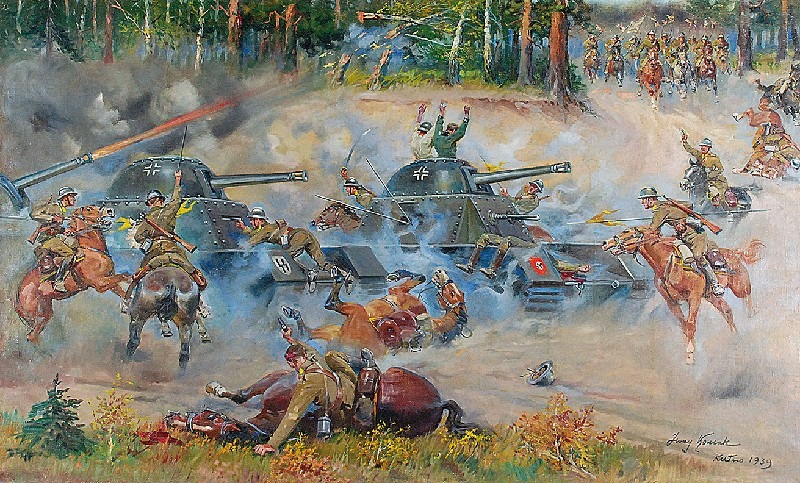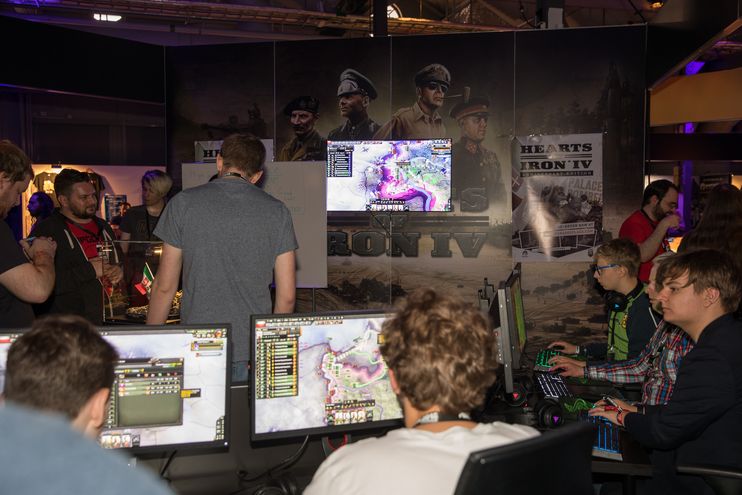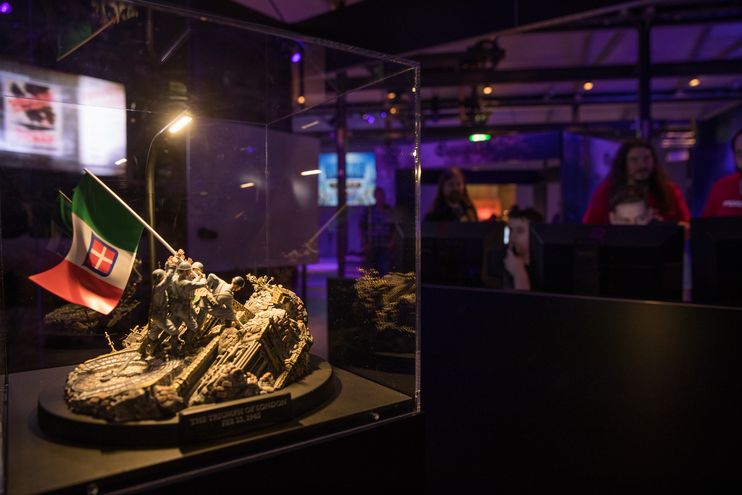Hi everyone! We are now back from PdxCon which was an amazing experience. If any of you were there, thanks a lot for coming! I had a lot of fun and interesting conversations with HOI fans and we had a very cool challenge to as Poland inflict as much casualties as possible on Germany in 1939 in just 30 minutes. The winner (all glory to @Zwireq, AKA Zwirbaum) pulled off 1.8 million using clever tactics and a strong cavalry army! What better way to save Poland than to turn the false myth of the polish cavalry charging German tanks around 

The myth itself is something based on reality where polish cavalry performed a successful charge early on in the war vs German infantry at the battle of Krojanty. Something the German propaganda machine tried to falsely portray as the poles being unprepared for meeting modern German armor (there were no tanks there). The myth apparently lived on a long time, notably taught in schools and promoted in soviet propaganda… that said, in Hearts of Iron IV at pdxcon the polish hussars did ride out and win!

The HOI4 booth where we ran the challenge.
We also announced the next big expansion for HOI: Man the Guns.

Man the Guns will focus on naval warfare primarily but also redoing UK and USA and giving them more fun options. There will also be other new focuses but those are secret for now. We will also be adding fuel to the game which a lot of people were very excited to hear about at pdxcon
The UK and US revamps we plan to handle the same way we did Germany and Japan, e.g the changed trees and historical path in the 1.6 'Ironclad' update and the new alt-history paths (despite my perhaps not so subtle hints people have figured out that there is going to be the possibility of a 2nd american civil war among other cool things).
As for the themes we decided to go with naval for several reasons. One, that it fits very well with USA (and they were on the top of our list of nations we felt needed more fun gameplay). Secondly we have already done big changes to both land and air in previous expansions and updates so it was time for the 3rd type of warfare to get its time in the spotlights. Its also currently in my opinion the weakest part of HOI and something we really want to make shine.
We are currently very early in development so things may change, but here are some things mentioned we are aiming to do (in expansion or free update or mixed):
- Ship design and the ability to refit older ships and keep things up to date
- Naval Terrain: different seas will behave differently and suit different ships and fleet compositions
- Revamped naval combat
- Fleets split up into task forces for better control
- New naval spotting system
- Ability to control naval routes and block areas you dont want units to travel through
- Fuel, obviously going to be a massive balance job for us and a big gameplay change for you
- Gameplay rules, particularly to help multiplayer groups out when it comes to manage their games
- of course other stuff as well. to be revealed in the future.
We don't have a release date yet, and most of the above is still subject to change because we are are still early. I really wanted to talk as much as possible about what we are up to at pdxcon though Hopefully I will see more of you next year there!
Hopefully I will see more of you next year there!
We also announced that HOI4 has hit 1 million sales (wooot), and to celebrate that we have decided to make an anniversary edition that comes with a super cool alt history diorama - Italian soldiers raising the flag over the rubble of Big Ben, Iwo Jima style . I felt italy invading London was one of the more hearts of iron things there was when it comes to alt-history
. I felt italy invading London was one of the more hearts of iron things there was when it comes to alt-history 

We had the first version for PdxCon in the booth fresh from the maker, and you can see it there in the picture above. The anniversary edition is actually possible to preorder already! Just follow this link.
As have been mentioned elsewhere this doesn't mean we are ready to start up regular diaries yet. You guys are not really fans of filler stuff, so we are going to have to wait a little longer for diaries to start up regularly again. I will let you know as soon as we feel ready to start showing things off proper.

The myth itself is something based on reality where polish cavalry performed a successful charge early on in the war vs German infantry at the battle of Krojanty. Something the German propaganda machine tried to falsely portray as the poles being unprepared for meeting modern German armor (there were no tanks there). The myth apparently lived on a long time, notably taught in schools and promoted in soviet propaganda… that said, in Hearts of Iron IV at pdxcon the polish hussars did ride out and win!

The HOI4 booth where we ran the challenge.
We also announced the next big expansion for HOI: Man the Guns.

Man the Guns will focus on naval warfare primarily but also redoing UK and USA and giving them more fun options. There will also be other new focuses but those are secret for now. We will also be adding fuel to the game which a lot of people were very excited to hear about at pdxcon
The UK and US revamps we plan to handle the same way we did Germany and Japan, e.g the changed trees and historical path in the 1.6 'Ironclad' update and the new alt-history paths (despite my perhaps not so subtle hints people have figured out that there is going to be the possibility of a 2nd american civil war among other cool things).
As for the themes we decided to go with naval for several reasons. One, that it fits very well with USA (and they were on the top of our list of nations we felt needed more fun gameplay). Secondly we have already done big changes to both land and air in previous expansions and updates so it was time for the 3rd type of warfare to get its time in the spotlights. Its also currently in my opinion the weakest part of HOI and something we really want to make shine.
We are currently very early in development so things may change, but here are some things mentioned we are aiming to do (in expansion or free update or mixed):
- Ship design and the ability to refit older ships and keep things up to date
- Naval Terrain: different seas will behave differently and suit different ships and fleet compositions
- Revamped naval combat
- Fleets split up into task forces for better control
- New naval spotting system
- Ability to control naval routes and block areas you dont want units to travel through
- Fuel, obviously going to be a massive balance job for us and a big gameplay change for you
- Gameplay rules, particularly to help multiplayer groups out when it comes to manage their games
- of course other stuff as well. to be revealed in the future.
We don't have a release date yet, and most of the above is still subject to change because we are are still early. I really wanted to talk as much as possible about what we are up to at pdxcon though
We also announced that HOI4 has hit 1 million sales (wooot), and to celebrate that we have decided to make an anniversary edition that comes with a super cool alt history diorama - Italian soldiers raising the flag over the rubble of Big Ben, Iwo Jima style

We had the first version for PdxCon in the booth fresh from the maker, and you can see it there in the picture above. The anniversary edition is actually possible to preorder already! Just follow this link.
As have been mentioned elsewhere this doesn't mean we are ready to start up regular diaries yet. You guys are not really fans of filler stuff, so we are going to have to wait a little longer for diaries to start up regularly again. I will let you know as soon as we feel ready to start showing things off proper.

